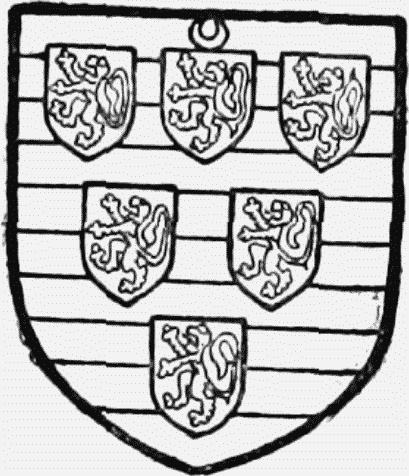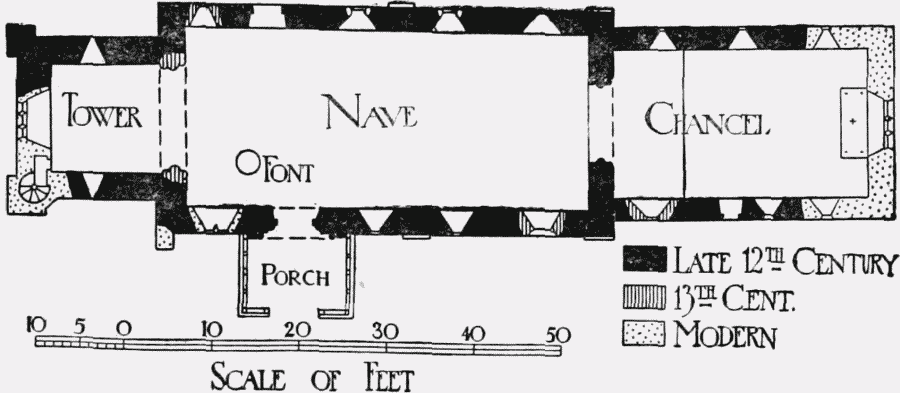A History of the County of York North Riding: Volume 1. Originally published by Victoria County History, London, 1914.
This free content was digitised by double rekeying. All rights reserved.
'Parishes: Salton', in A History of the County of York North Riding: Volume 1, ed. William Page( London, 1914), British History Online https://prod.british-history.ac.uk/vch/yorks/north/vol1/pp552-555 [accessed 26 November 2024].
'Parishes: Salton', in A History of the County of York North Riding: Volume 1. Edited by William Page( London, 1914), British History Online, accessed November 26, 2024, https://prod.british-history.ac.uk/vch/yorks/north/vol1/pp552-555.
"Parishes: Salton". A History of the County of York North Riding: Volume 1. Ed. William Page(London, 1914), , British History Online. Web. 26 November 2024. https://prod.british-history.ac.uk/vch/yorks/north/vol1/pp552-555.
In this section
SALTON
Saleton (xi cent.); Saulton (xv cent.).
Salton is a parish covering about 2,760 acres of low ground, bounded by the Rye on the south and by its tributaries the Seven and the Dove on the east and west respectively. The soil is loam and alluvium and grows oats, wheat and barley, while the pasture land, covering not quite half the total area, is very good; 1,116 acres are under cultivation. (fn. 1)
The village of Salton consists of a few modern brick cottages roofed with slate or tiles, which lie to the north-west of a small green. The church stands at the south end of the village in a churchyard inclosed by an iron railing and hedge. The River Dove runs to the west of the church.
On the Dove the Priors of Hexham once had a manorial water-mill. This has disappeared, as has the prior's residence, with its 'hall, three chambers and a chapel, a kitchen, a brewery, a great stable, and orchards and gardens.' (fn. 2) There is a school and a Primitive Methodist chapel. The bridge over the Dove at this point was known in 1479 as Crossow Bridge and the fields near it as Bla-pule. (fn. 3)
South of the village is Cliff Hill, rising about 150 ft. above the ordnance datum, and the highest point in this low-lying parish. In a south-easterly direction is the village of Brawby, which lies between the Rivers Seven and Rye, just above their junction. Brawby Park, at the north end of the village street, is the residence of Mr. George Colby. Further down the street is a Primitive Methodist chapel.
Manor
In SALTON Ulf had two 'manors' and 9 carucates before the Conquest. (fn. 4) He gave them into the hands of the Archbishop of York with the rest of his estates, (fn. 5) and they appear among the possessions of St. Peter in 1086. (fn. 6) A prebend in the church of York must have been constituted with this land soon after the time of the Survey, for Archbishop Thurstan, early in the 12th century, gave the prebend of Salton, with the impropriation of the church and the advowson of the vicarage, to Hexham Priory. (fn. 7) The prior was always to be the prebendary, and the lands of the prebend formed one of the most important possessions of the priory. The prior had two residences here in 1479, one in the vill of Salton itself and one in the northern part of the manor; he had also 16 oxgangs of demesne land and a wood called Frensholme. (fn. 8) The rest of the manor was let out to farm, as was the 'guest-hall' in the north of the manor. (fn. 9) A steward was appointed to look after the estate. The services of the tenants included the buying of a palfrey for each new prior and carrying provisions for him and his suite when they travelled in Yorkshire. They were also bound to convey all timber and other materials necessary for the repair of the manor-houses and the prior's mill, at which they ground their corn. (fn. 10)
The value of the prebend at the time of the Dissolution was £24. (fn. 11) The last prior granted an annuity of 5 marks out of the manor in 1528. (fn. 12) He himself had a grant from Henry VIII of the rectory and prebend in lieu of a pension of £30 when the priory was dissolved. (fn. 13) The prebend, being annexed to the priory, was suppressed at the same time, and the manor and lands belonging to it in Salton were next leased to Sir Reynold Carnabye, (fn. 14) and afterwards granted in 1545, as a reward for good service, to William Lord Eure in fee. (fn. 15) He died in 1548 (fn. 16) and was succeeded by his grandson William. The latter died in 1593–4 and the manor was inherited by his son and heir Ralph. (fn. 17) William son and heir of Ralph succeeded in 1617 to his father's estates. (fn. 18) He found them, apparently, encumbered with debts, and arranged to sell Salton to Sir Thomas Bennet, alderman of London. In order that difficulties caused by Lord Eure's recusancy might be avoided the king allowed the manor to be transferred to himself, and afterwards granted it to Sir Thomas Bennet. (fn. 19) The sale was thus carried out in 1624. (fn. 20) By his will Sir Thomas Bennet settled it in 1626 (fn. 21) on his son Simon, with contingent remainder to his third son Richard. On the death of Sir Simon in 1631 (fn. 22) his nephew Simon son of Richard was his heir and was in possession in 1656. (fn. 23) Simon's daughter and ultimately sole heir Frances married in 1683 James Earl of Salisbury, (fn. 24) carrying the manor of Salton into the Cecil family. It remained in the possession of the Earls of Salisbury till the end of the 18th century, when it appears to have been sold to the Dowker family. (fn. 25) J. Dowker was lord in 1809 and died in 1816. (fn. 26) He was succeeded by G. W. Dowker. (fn. 27) In 1837 the manor was purchased from his family by John Woodall, (fn. 28) whose eldest son and heir Mr. J. Woodall Woodall left it on his death in 1905 to his nephew Mr. C. H. Dent, the present owner. (fn. 29)

Bennet. Gules a bezant between three demi-lions argent.

Cecil, Earl of Salisbury. Barry of ten pieces argent and azure six scutcheons sable with a lion argent in each, with the difference of a crescent.
A grant of free warren in Salton was made to the Prior of Hexham in 1286. (fn. 30)

Plan of Salton Church
A 'manor' and 6 carucates at BRAWBY (Braybi, xi cent.; Brauby, xiv cent.) were given by Ulf to St. Peter's and followed the descent of Salton Manor throughout. (fn. 31) Brawby is never described as a manor after 1086. The prior had 51 oxgangs 3 acres here, of which all but 8 oxgangs 3 acres were held by bondmen owing the same services as their neighbours of Salton. (fn. 32)
Church
The church of ST. JOHN OF BEVERLEY consists of a chancel 29 ft. by 16 ft. 11 in., an aisleless nave 46 ft. 3 in. by about 20 ft. 3 in., a west tower 12 ft. 5 in. square, and a south porch. These measurements are all internal.
The present church dates from the latter part of the 12th century. Early in the 13th century the tower arch was inserted and some of the original windows were enlarged. No alteration appears to have been made until 1881, when the church was entirely restored, the east wall of the chancel rebuilt, and the old roofs renewed.
The east window is modern and of three cinquefoiled lights with vertical tracery under a pointed head. In the north wall of the chancel are three single lights; the eastern one is modern and has a cinquefoiled head, but the other two are original round-headed 12th-century windows with deeply splayed inner jambs and small external chamfers. The external heads are cut out of single stones and have incised on their outer face a narrow border running round the stone. The two eastern windows in the south wall are similar to the corresponding ones in the opposite wall, but the western one is an inserted 13th-century lancet and has an external chamfered hood mould, although to the east of it on the inside can be seen the east jamb of a blocked-up original window. Between this light and the next is a round-headed priest's doorway. The outer arch is of a single order and is enriched with zigzag ornament stopped by chamfered abaci now much decayed. Over the arch is a hood mould on which can be traced some billet ornament; the jambs are square. The chancel arch is semicircular and of two square orders enriched towards the nave with zigzag ornament over which is a carved label. The jambs are shafted and have scalloped capitals with chamfered abaci and moulded bases. The capitals to the north jamb have cable-moulded necking. Along the north and south walls of the chancel are corbel tables of small arches carried on carved corbels. These are much decayed, but many appear to be grotesque masks.
Although the detail in the chancel and nave is apparently of the same date, the walls of the respective parts are not bonded into each other. In the north wall of the nave are five single lights, the eastern one having a semicircular rear arch with an inserted external lancet head. The next two windows are set higher in the wall and have semicircular heads with widely splayed inner jambs. These, however, have been widened and larger openings with a small external chamfer inserted in place of the original narrow lights. To the west of these is a semicircular-headed doorway with a hood mould stopping on flat abaci. The rear arch is segmental and both the external head and jambs are chamfered. Over the doorway is an original narrow round headed window with widely splayed internal jambs and rear arch. The north-west window is a 13th-century lancet with a narrow internal splay. The outer head is entirely modern. There are four windows in the south wall. The easternmost is much restored; it appears to be an original opening enlarged, with an external pointed head and double-chamfered jambs inserted in the 13th century. The next two windows are of the same type as the corresponding openings on the opposite wall of the nave. To the west of these is a semicircular-headed 12th-century doorway of one order moulded with the bird's beak ornament. The hood mould is carved with a series of heads and rests on small shafts having scalloped capitals with chamfered abaci. The shafts are modern, as are also the rear arch and inner jambs. The south-west window is modern and of two trefoiled lights with vertical tracery under a pointed head having an external hood mould. At the southeast corner of the nave and between the second and third windows from the east are the bases of flat buttresses, while the bases of similar ones in a corresponding position can be seen against the north wall. The south-east corner was rebuilt in the restoration of 1881, when the east wall of the chancel was reconstructed. Corbels of late 12thcentury date, similar to those to the chancel walls, support a modern heightening of the wall under the eaves of the nave roof.

Salton Church from the South-east
The tower is of two stages with flat angle buttresses at the west end, and an embattled parapet carried on a corbel table similar to those round the wall heads of the nave and chancel, and is crowned by a low modern lead spire. The tower arch is pointed and of two chamfered orders carried on responds of three clustered shafts having moulded capitals and bases. The west window is modern and of three cinquefoiled lights under a 'perpendicular' traceried head, and in the north and south walls, lighting the ground stage, are two square-headed openings with splayed inner jambs. Above that in the south wall are the remains of a sundial. In the south-west angle is a modern vice. Lighting the ringing chamber are narrow round-headed openings, above which a moulded string marks the level of the bell-chamber. On each side of the bell-chamber are pointed openings of two chamfered orders, the inner continuous, while the outer order is carried by small shafts with moulded capitals and bases. The opening on the north is not placed centrally in the wall, and all these windows appear to have been inserted early in the 13th century. The upper part of the south porch is built of oak taken from the timbers of the old chancel roof.
The font is modern. Under the tower is a 17thcentury altar table, and the pulpit, though much restored, is of about the same date, as are also the side panels in the reading desk. Beneath the tower arch is a late 12th-century oak chest, with three locks and contemporary ironwork. The top, however, is of 17th-century date.
There are two bells, perhaps of the 17th century, the first having an illegible inscription, the second without marks of any kind.
The plate consists of a silver cup, paten, flagon and almsdish and a pewter paten and flagon. The silver vessels are of 1840 and were the gift of Edward A. Woodall, vicar, in 1841.
The registers begin in 1573.
Advowson
The advowson formed part of the endowment of the prebend of Salton, to which it was appropriated; in 1312 the prebendary ordained a vicarage here. (fn. 33) It has throughout followed the descent of the manor (fn. 34) (q.v.)
There are no endowed charities in this parish.
